#mapudungun
Video
youtube
¿Sabías que nadie sabe realmente el origen del nombre Chile?
¿O que el español chileno y latino en general tiene muchas palabras de origen indígena?
5 notes
·
View notes
Text
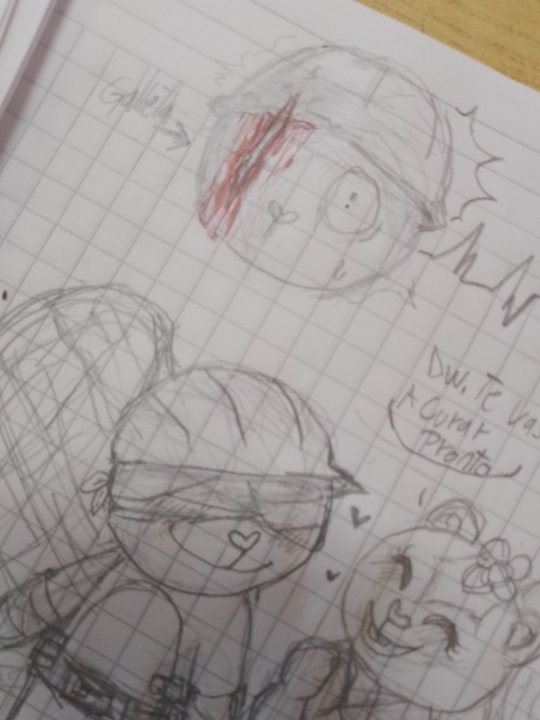
#wip#rgkr#rgkg#sketch#happytreefriends#fanart#doodle#draw#doodles#ships#htfhandy#htfpetunia#happytreefriendshandy#happytreefriendspetunia#petuniaxhandy#ship#love#wipart#wips#Gore#blood#bloody#bloodyeye#tw gore#mildblood#tw blood#traditional art#tools#spanish#mapudungun
0 notes
Text
0 notes
Text
"Huechicura": Primer sencillo de "Chimalguen" en miras a su próximo LP
“Huechicura”: Primer sencillo de “Chimalguen” en miras a su próximo LP
La banda de rock de raíz originaria de Cañete estrena single y videoclip “Huechicura”.
“Huechicura” es el nombre de la canción que el quinteto cañetino trae este 2022 para comenzar la ruta camino hacia su álbum de larga duración.
‘Piedra Joven’ – Weche Kura – narra una historia situada e inspirada entre la cordillera de Nahuelbuta y el mar, lejos de la occidentalización y la invasión cultural dos…

View On WordPress
0 notes
Photo

Junto al Longko Gillatufe José Epuyao del Lof Yakito Daglipulli (La Unión) #lonko #longko #guillatufe #launion #wetripantu #wetxipantu #chamiza #mapuche #huilliche #etnic #indigena #indigenous #musicalinstrument #instrumentomusical #mapudungun #mapuzungun #tchesungun #bufoland #puertomontt #chile #instamontt #puertomonttchile #melipulli https://www.instagram.com/p/CfVOO2nONnx/?igshid=NGJjMDIxMWI=
#lonko#longko#guillatufe#launion#wetripantu#wetxipantu#chamiza#mapuche#huilliche#etnic#indigena#indigenous#musicalinstrument#instrumentomusical#mapudungun#mapuzungun#tchesungun#bufoland#puertomontt#chile#instamontt#puertomonttchile#melipulli
0 notes
Text



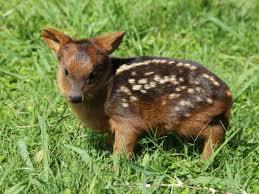
regarding my recent rb i just need you guys to learn about pudus they're one of my favorite animals ever. they're the world's smallest deer species I'm pretty sure
#their name comes from mapudungun a native language from the south of Chile!!#sorry i love this little guy#star rambles#Chile and Argentina * sorry
26 notes
·
View notes
Note
This is gonna be a weird question but I promise it will make sense I’m the future
If Martin was to be named anything else, what name would would you choose for him?
Mmmh this is hard. I kinda can't un-see the name Martín, I've been working with my boy for a long time. I did some quick research on baby name pages and I guess I'll go with Alejandro, Facundo, Nahuel and Nicolás.
#I have very little reasons for this pics ngl#Alejandro just sounds like a big strong prideful name#that's literally it for that one#Facundo sounds strong too if you ask me and we did have a caudillo named that way so#I think it's my fave pick#Nicolás I'm picking for Nuestra Señora del Rosario de San Nicolás#Nahuel might be debatable since it's mapudungun#but it's such a lovely name#hopes this helps Caju~#latin hetalia
7 notes
·
View notes
Text
youtube
Oooo you wanna watch two bugs dancing cueca animated with stop-motion soooo bad.
#bugs#video#ok so context: the word for boyfriend in my country is pololo#it comes from a kind of beetle we know as pololo#which in turn comes from mapudungun iirc pülülu#anyways yeah im not romantic but this was cute#Youtube
0 notes
Text
Chakisaurus nekul Nogueira et al., 2024 (new genus and species)

(Tail vertebrae of Chakisaurus nekul [scale bar = 3 cm], from Nogueira et al., 2024)
Meaning of name: Chakisaurus = elder guanaco [in Tehuelche] lizard [in Greek]; nekul = swift [in Mapudungun]
Age: Late Cretaceous (Cenomanian–Turonian)
Where found: Huincul Formation, Río Negro, Argentina
How much is known: Partial skeletons of several individuals together representing much of the vertebral column and multiple limb bones. An isolated partial ulna (forearm bone) and a neck vertebra are also known.
Notes: Chakisaurus was an ornithopod, a group of plant-eating dinosaurs that includes the duck-billed hadrosaurids. However, it was only distantly related to the hadrosaurids, instead being a member of Elasmaria, a diverse group of small to medium-sized ornithopods from the Southern Hemisphere.
Chakisaurus had unusual features of its tail vertebrae indicating that the base of its tail may have been typically held with a downward curve, instead of horizontally as is the norm for most other dinosaurs. Among dinosaurs, this type of tail configuration had previously only been reported in some types of titanosaurian sauropods. Additionally, the main muscles that pull the hindlimbs backward (which are attached to the tail in most dinosaurs and other reptiles) appear to have been very well developed in Chakisaurus, which may suggest that it was a powerful sprinter.
Fossils of both juvenile and older individuals of Chakisaurus have been found, allowing study of its growth. Based on microscopic examination of its bone structure, the largest known specimen of Chakisaurus had reached sexual maturity when it died, but had not finished growing, a pattern commonly seen in Mesozoic dinosaurs.
Reference: Nogueira, R.A., S. Rozadilla, F.L. Agnolín, J.A.G. Marsà, M.J. Motta, and F.E. Novas. 2024. A new ornithopod from the Upper Cretaceous (Huincul Formation) of northwestern Patagonia, Argentina. Implications on elasmarian postcranial anatomy. Cretaceous Research advance online publication. doi: 10.1016/j.cretres.2024.105874
71 notes
·
View notes
Text
The letters and their values: A-E
<a>: Almost always a low vowel, with the exception of certain English-derived alphabets: in Saanich, <A> writes the [ɛ] allophone of /e/ <Á> that occurs adjacent to postvelars, and in the orthographic tradition initiated by the North American missionary Jotham Meeker (1804-1855), designed around the constraints of standard type for newspapers and bearing substantial influence from English (perhaps owing to Meeker's lack of formal education), <a> writes either /a/ or /e/ depending on language - consider, for example, the Shawnee form Sieiwinoweakwa /sajaːwanoːwijeːkwe/, with <a e i> /e i a/. (Vowel length was unwritten.) Meeker's alphabets are no longer used.
Some derivatives of <a> exist, most notably <æ>, an a-e ligature that came to be used in Germanic languages for /æ/, and in Ossetian for schwa, which the Swedish linguist Anders Sjögren heard as a type of e and compared to Finnish ä. This ligature developed in parallel into 'e caudata', an e with a bottom curl as a remnant of <a>, which later developed into <ę>; this usage is now extinct. A reversed <a>, <ɐ>, has common use in phonetic alphabets, presumably owing to ease of printing; in addition to IPA and the Uralic Phonetic Alphabet (where rotation has systematic meaning), William Price used it in his Cornish alphabet for 'A in all, small, &c.', and the Fraser script - a descendant of Latin, but not a form of it - uses <ꓯ> for /ɛ/.
<b>: Almost always a lenis labial plosive; an exception is one of the three competing alphabets for Mapudungun, where it writes /l̪/. Occasionally a tone letter, as in the Romanized Popular Alphabet for Hmong - pob /pó/. Frequently repurposed in the Meeker orthographies: /ju/ or /joː/ in Unami (note that Deseret and Shavian, de novo orthographies for English, both define a character for English /juː/), and /θ/ in Shawnee, as in the name of Meeker's newspaper, Siwinowe Kesibwi /saːwanoːwi kiːsaʔθwa/.
<c>: In Latin, /k/, which was palatalized before front vowels in the Romance languages, producing alternations like <ca ce> /ka tʃe/. Adopted for /ts/ in most of the languages of Central and Eastern Europe, in a usage codified at least by De orthographia bohemica, a work standardizing Czech orthography, traditionally attributed to Jan Hus. /tʃ/ in Sanskrit romanization as a compromise between English <ch> and Sanskrit's four-way stop contrast, and in Malay as a compromise between English-influenced <ch> and Dutch-influenced <tj>; similarly, /ʃ/ in some North African languages, probably as a simplification of French <ch> /ʃ/. /k/ in Vietnamese (before nonfront vowels; otherwise /k/ <k>) and Saanich (in all positions, but /k/ is rare) by the influence of Portuguese and English respectively. /e/ and /ə/ in Meeker's orthography for Unami; it was left over because Meeker used <h> for /tʃ/. (This is paralleled, but certainly not inspired, by Benjamin Franklin's earlier use of derivatives of <h> for all of /ʌ ð θ ʃ/.)
Etruscan and Old Latin had three letters for the velar plosives, <c k q>, depending on the following vowel; these usages are preserved in the names of the letters, originally /ke ka ku/. In Latin, <c> displaced <k> (which came to be primarily used in, and even as an abbreviation for, the word kalendae and derivatives; English ought to spell it kalendar), but with the common use of <k> in modern non-Romance orthographies other than English (which preserves a general preference for <c> over <k> where permissible) <c> came to be seen as a repurposable 'free letter' with no particular attachment to any sound value, hence its use for /ð/ in Fijian, /|/ (a dental click) in Sandawe, Hadza, and the Nguni languages.
Sometimes <c> derives its value from its resemblance to another character, as with /ʕ/ in Somali from <ʕ>, /dʒ/ in Turkish from <ج>, and /ɔ/ in Natqgu from <ɔ>.
<ç> originated as a form of <z> - z -> ʒ -> Ꝣ -> ç - but is now treated as <;c> with a diacritic, the cedilla, which was extracted and attached to <s> to form the Turkish letter <ş>.
<d>: Generally a lenis coronal plosive; sometimes used for /θ/ or /ð/, esp. in languages without a voicing contrast in plosives. Alexandre de Rhodes used <d>, by analogy to Portuguese, for the Middle Vietnamese dental approximant /ð̞/ that developed from *t by lenition after a preinitial (e.g. dái 'scrotum' ~ Thavung ktaal3) and from Proto-Vietic *j; this sound later shifted to /z/ in the north and /j/ in the south.
<e>: Generally /e/, /ə/, or (as in many Western European languages and Malay) both. /ɣ/ in Aklanon, as in the tongue-twister /ro kaɣamaj nagakuɣuɣaput sa kaɣahaʔ/ Ro kaeamay nagakueoeaput sa kaeaha. (from p. 22 of the Peace Corps manual). /i/ in the Meeker orthographies by influence from English; Saanich, however, has <E> /ə/.
From <e> the letter <ɛ> was derived. I'm not sure what its history is; the first occurrence I'm aware of is in Isaac Pitman's English Phonotypic Alphabet, where it was used for a long vowel /iː/ as in <ɛl> 'eel', replacing an earlier barred I.
(The original phonotypic alphabet was unicameral, with six basic vowels, e a ah au o oo written I ⵎ Λ O U and a letter like a capital ꭐ without the middle dot, and an 'obscure vowel' written with a reversed ⵎ. To this was added vowel length, written with a middle line, and the three diphthong letters Ɯ (e-oo), ⚻ (ah-e), and ȣ (au-oo); CHOICE, or au-e, was written with the digraph <ƟƗ>. This scheme was quickly abandoned, and the 1847 version was bicameral and contained <ɛ>.)
This phonotypic <ɛ> is probably the source of the Deseret letter <𐐩> /ej/ - which, however, was originally written backwards: the 1854 handout presented to the Board of Regents of the Deseret University has <3𐐣> 'aim', but it was reversed a year later. (The Mormon hierarchy almost adopted Pitman's phonotype as the basis for their planned orthographic reform, but decided against it at the last minute.)
An 1879 proposal for an Albanian alphabet used <ɛ e> for /e ə/, presumably from Greek and French respectively (also <r p> /ɾ r/), and Otto Jespersen used <ɛ> for the mid front vowel [e̞] in his 1890 phonetic alphabet. It was later adopted for its current use in IPA and many African alphabets. Due to its resemblance to Arabic <ع>, it's also used in some Berber Latin alphabets for the voiced pharyngeal fricative /ʕ/.
42 notes
·
View notes
Text

Epullanca the puma photographed by Andrea Palma Vadell. The name comes from two Mapudungun words: “epu” meaning two and “llanca” meaning jewel.
29 notes
·
View notes
Link
Fossils of a small, prickly dinosaur recently discovered in South America may represent an entire lineage of armored dinosaurs previously unknown to science.
The newly discovered species, Jakapil kaniukura, looks like a primitive relative of armored dinosaurs like Ankylosaurus or Stegosaurus, but it came from the Cretaceous, the last era of the dinosaurs, and lived between 97 million and 94 million years ago.
That means a whole lineage of armored dinosaurs lived in the Southern Hemisphere but had gone completely undetected until now, paleontologists reported in a new study.
J. kaniukura weighed about as much as a house cat and had a row of protective spines running from its neck to its tail and probably grew to about 5 feet (1.5 meters) long. It was a plant eater, with leaf-shaped teeth similar to those of Stegosaurus.
Continue Reading.
#Science#dinosaurs#paleontology#palaeontology#Biology#Zoology#Jakapil kaniukura#Tiny dinosaurs#argentina
393 notes
·
View notes
Note
I just read tour navigation, what languages do you speak?
Also physics and engineering? That's my drem combo with astronomy! But I am studying medicine :))))))))))) :(
hihi love!! i speak spanish, french, german, italian, and english. i understand (and can speak a bit of) mapudungun (language of mapuche, natives from chile & argentina) and portuguese <3
and yess!!!! i got interested in engineering very young, participated in a lot of competitions and projects. then i fell in love with physics, i didn’t want anything more than to study pure raw physics. i ended up double majoring and i love it, it’s really a dream come true!
i hope everything goes alright with medicine! but hope your dream comes true, it’s a wonderful thing to study. sending muuuuch luv! <333
15 notes
·
View notes
Photo
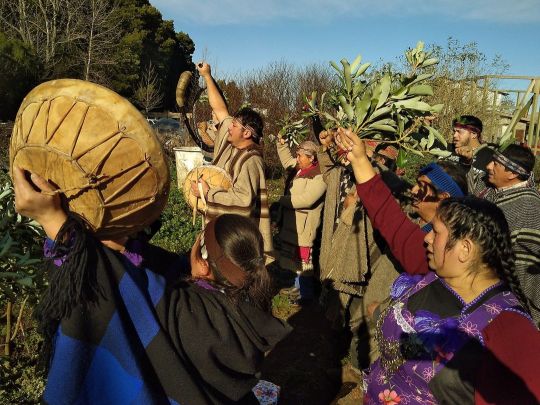
WE WIÑOL TXIPANTU EN CHAMIZA #wetripantu #wetxipantu #chamiza #mapuche #huilliche #etnic #indigena #indigenous #musicalinstrument #instrumentomusical #mapudungun #mapuzungun #tchesungun @ligpiuke #bufoland #puertomontt #chile #instamontt #puertomonttchile #melipulli https://www.instagram.com/p/CfLDlecOIxI/?igshid=NGJjMDIxMWI=
#wetripantu#wetxipantu#chamiza#mapuche#huilliche#etnic#indigena#indigenous#musicalinstrument#instrumentomusical#mapudungun#mapuzungun#tchesungun#bufoland#puertomontt#chile#instamontt#puertomonttchile#melipulli
0 notes
Text
One of the tasks of the European voyages around the globe from the sixteenth through the eighteenth century was to discover new environmental resources. In 1578, in the Strait of Magellan [...], the English traveler John Winter found a new plant, which was officially named in his honor: Drimys winteri. Nowadays, the ground bark of the species is actively sold as a “Mapuche pepper from the canelo tree.” This is a popular commercial product, which represents one of the recent gastronomic symbols of modern Chile.
In Mapudungun, the language of the Mapuche people -- one of the Indigenous communities [...] in central and southern Chile and southern Argentina -- the tree is called foye. The Mapuche [...] have used it for funerary rituals and medicinal purposes [...]. In the seventeenth century, the Chilean writer Francisco Núñez de Pineda y Bascuñán and the Spanish Jesuit Diego de Rosales [...] reported [...] [medicinal] Indigenous uses of the plant. Nevertheless, their manuscripts were not published until the end of the colonial era. [...] [S]ailors considered Drimys winteri a food spice, since it had a similar taste to pepper (Piper nigrum) or cinnamon (Cinnamomum verum). The tree’s bark was also used as a remedy against scurvy [...] during long travels. At the same time, European scholars did not report any use of the plant among the Indigenous communities [...].

The exclusion of Indigenous and local knowledge was also supported in the Natural History of Chile [...], published [...] in 1646. According to sailors’ reports, Ovalle stated, there is a tree [...] called canelo, similar to pepper and cinnamon. European descriptions of Drimys winteri were primarily based upon the records of navigators, who emphasized analogies with cinnamon in order to boost sales of the product. [...] Colonial botanists mainly stressed the similarity of Drimys winteri to cinnamon. French botanist and traveler Louis Feuillée, among others, classified the specimen within European plant taxonomy as Boigue cinnamomifera, consciously evoking the taste and color of cinnamon. [...]
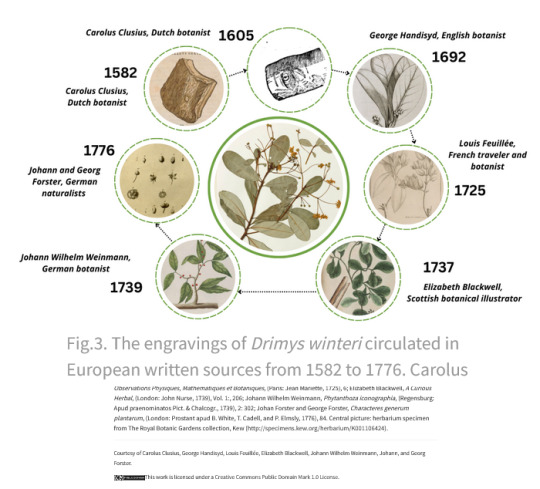
In the Natural History of Chile, Jesuits presented canelo to a European audience, stressing the analogy to the European knowledge system. [...] At the end of the seventeenth century, the British physician William Salmon and booksellers Thomas Passenger and Ebenezer Tracy began to sell a special product by the name of “Balsam de Chili.” The remedy was advertised as being similar to “Balsam de Peru,” a famous panacea in that period.
The miraculous ingredient in this balsam, reported to be a “small tree of Chili,” was probably Drimys winteri.
In the same period, the studied plant, known in England as Winter’s Bark or Winter’s cinnamon, was used by English apothecaries in many recipes (Figure 4).

Nevertheless, the Chilean native plant was often confused with cinnamon and Canella alba (Canella winterana). After [...] 1693 [...] Balsam de Chili gradually disappeared from the English market.
During the colonial period, Indigenous and local environmental knowledge about Drimys winteri was partly ignored by European voyagers. The constructed knowledge system circulated in the European written sources was mainly based on travelers’ reports [...]. [E]xclusion of Other ecological knowledge might represent [...] the inability to give specific meaning and importance to plants for the European audience. The environmental ignorance surrounding Drimys winteri supported the European epistemic hierarchy, entrenched coloniality, and promoted the persisting unbalanced relationship between different forms of knowledge. The Drimys winteri sold nowadays with the Spanish name canelo, as a food spice similar to pepper and related to Mapuche culture, represents one of the outcomes [...]. Consequently, [...] [this] was not a temporary process. It [...] has long-term effects and still affects contemporary knowledge circulation about Drimys winteri in Chile.

---
Images, captions, and text by: Matteo Sartori and Julia Prakofjewa. "Drimys winteri: Circulation of Environmental Ignorance in European Written Sources (1578–1776).” Environment and Society Portal, Arcadia (Summer 2023), no. 15. Rachel Carson Center for Environment and Society. [Bold emphasis and some paragraph breaks/contractions added by me.]
24 notes
·
View notes
Text
Cada country en mi canon tiene una transformación que hace ver como "su verdadero yo" o "su alma" cada uno tiene habilidades especiales y significado, todo en representación a sus ámbitos culturales, sociales o incluso políticos.
Contaré el de chilito por que obvio es el que más me sé jsjsjs, pero pa que vean el modus operandi de los diseños.

En el caso de chile estoy realizando mejorías porque hace tiempo le había diseñado uno pero era en relación a la cultura de tribus indígenas que habitaron, destacando por sobre todo a la mapuche y la estrella guñelve, junto con rapa nui, la isla polinesia donde existen los conocidos moais 🗿, que son patrimonios de la humanidad 🎉. (No tengo el dibujo lo tengo que buscar) Bandera mapuche ancestral del siglo XVIII:

Sin embargo, juntando lo que es chile como país mestizo y toda su historia, que este "tuerto" o que aparente estarlo hace sentido a la cantidad de guerras, traiciones y dificultades que a pasado en contra de el mismo.
El diseño estaría concentrado en la transformación de una piel negra en conjunto con el blanco y plata (por la artesanía mapuche y el brillo ancestral de una estrella blanca) y la piel negra es la agonía y oscuridad que cubre todo chile, porque si, chile tiene otra bandera que se creo en 2019 en honor a todos los chilenos que han sufrido las injusticias del país.
También a la cantidad de gente que le balearon los ojos en el estallido social muchos chilenos quedaron tuertos o ciego.




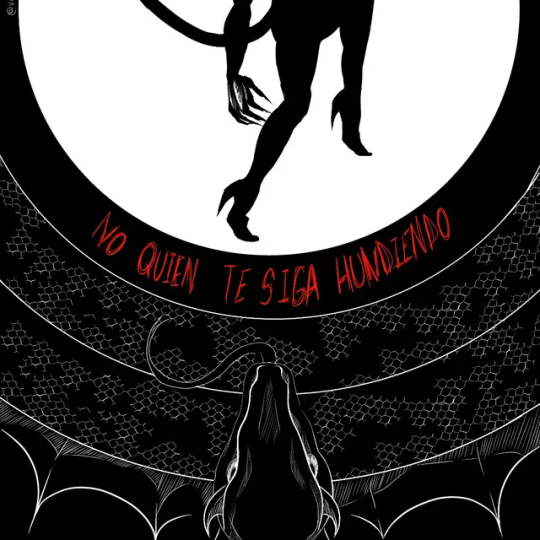
La cultura mapuche está ligada en el comportamiento de lucha y conflicto para lograr algo sin fin y el amor a la naturaleza y los animales.
Lo diseño también como una pequeña referencia a "lucifer" igual por el significado bíblico y uniéndola al significado otorgado por la discriminación que mucha gente países vecinos han dado como "chile esta solo".
La frase: "la estrella solitaria de venus" el ángel caído y referencia a la frase del himno de chile "la copia feliz del edén".

El color rojo de la bandera de chile es la sangre de todos los chilenos que murieron por ella y creo que muchos igual tienen ese significado en sus banderas.
Aunque lo iconico de la de chile es como el propio pueblo fue quien la destruyó, en si el propio corazón de chile siendo destruido en el 73.
La representación de agujeros es la realidad de cuantas veces a sido destruida una bandera de chile por si mismo, aunque los que balearon la moneda fueron los estado unidenses.


En otro contexto para la realización del diseño en su transformacion, esta la representación de tren tren y caí cai vilu, las serpientes mellizas, donde una es la serpiente del mar y la otra de la tierra (chile tiene un sin fin de leyendas que se asocian a su geografía, también daré alusión a los incontables volcanes que se ubican a lo largo del país, destacando más que nada los 7 volcanes gigantes ubicados 1 en cada región)
El significado de esta leyenda mapuche es que los araucarias creían que cuando había un terremoto o un tsunami era por que estas serpientes vivían luchando entre sí, por lo cual son literalmente "Chile" o están ligadas a el pais de manera sólida, tanto como el significado de su nombre que la teoría más cercana es que, Chile significa "el confín de la tierra" su significado en quechua y se pronuncia "Chiri", en mapudungun también se le daba el significado de "Frío".
Para terminar el 2do que voy a diseñar es México 🇲🇽 y quiero ponerle arto cariño, para ello obvio tendré que leer mucho, pero .e encantaría asociar a México como el "Diablo"🔥 ya que por lo poco que e leído y enterado, mexico tiene esa cultura que se puede asociar al concepto de aquello y de los infiernos.
#mexchi#mexicoxchile#countryhumans chile#countryhumans#countryhumanschile#mexico countryhumans#mexile#countryhumans mexico
15 notes
·
View notes